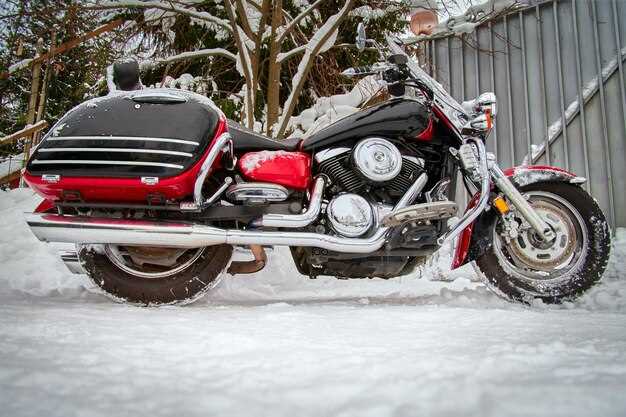
As the temperatures drop and winter approaches, it’s crucial to take the necessary steps to winterize your motorcycle. Proper care and preparation can significantly extend the life of your bike, ensuring it remains in top condition for the next riding season. Without adequate protection, cold weather can lead to numerous issues, from battery failure to frozen fluids.
To begin with, storing your motorcycle correctly is the foundation of winter care. Whether you plan to keep your bike in a garage or use a storage unit, ensuring a clean and dry environment is essential. Taking the time to clean your bike thoroughly before storage will prevent rust and corrosion, allowing it to emerge from winter unscathed.
Additionally, don’t underestimate the importance of maintaining your motorcycle’s fluids. Change the oil and fill up the gas tank to minimize condensation and fuel degradation. Aspects like tire pressure and battery maintenance are also critical to preserving your bike over the winter months. Following these tips will help you ensure your motorcycle is ready to hit the road when spring arrives, free from the worries of cold-weather damage.
Winterizing Your Motorcycle: Tips for Cold Weather Care
Preparing your bike for the winter months is essential to ensure its longevity and optimal performance when the riding season resumes. Here are some essential tips for effective winter storage and maintenance.
1. Clean Your Motorcycle: Before storing your bike, give it a thorough cleaning. Remove dirt, grime, and any corrosive substances that may have accumulated. Pay special attention to the chain and exposed components, which can rust if not cleaned properly.
2. Change the Oil: Old engine oil contains contaminants that can harm your bike’s engine over time. Change the oil and replace the oil filter to keep your engine fresh and ready for action when spring arrives.
3. Fuel System Care: Fill your gas tank to prevent condensation from forming inside. Adding a fuel stabilizer will help keep the fuel fresh and prevent clogging of fuel lines. Run the engine for a few minutes to ensure the stabilizer circulates throughout the system.
4. Battery Maintenance: Disconnect and remove the battery from your bike to prevent it from draining. Store it in a cool, dry place, and consider using a battery maintainer to keep it charged throughout the winter.
5. Tires and Suspension: Inflate your tires to the recommended pressure to avoid flat spots. If possible, elevate your bike off the ground with a stand or by placing it on blocks to relieve pressure on the suspension.
6. Storage Location: Choose a suitable location for storing your motorcycle. Ideally, it should be a dry, temperature-controlled environment. Use a quality cover to protect it from dust and moisture while ensuring it allows for ventilation to prevent mold growth.
7. Inspect and Cover: Before storing your bike, inspect all fluids and components for leaks or wear. Use a breathable cover to protect it from dust and debris while allowing moisture to escape, preventing corrosion.
By following these winterizing tips, you can ensure that your motorcycle is well-prepped for cold weather care, ready to hit the road when the temperatures rise again.
Preparing Your Motorcycle for Winter Storage
Winterizing your motorcycle is essential for maintaining its condition during the cold months. Proper storage techniques can significantly extend the life of your bike and ensure it’s ready for the riding season when spring arrives. Here are some important tips for effective winter storage.
First, clean your motorcycle thoroughly before storing it. Remove any dirt, grime, or debris that could lead to corrosion. Pay special attention to the chain, brake components, and undercarriage, where moisture can accumulate.
Next, change the oil and filter. Fresh oil helps prevent engine contamination and protects internal components from rust during storage. After changing the oil, run the engine for a few minutes to circulate it throughout the system.
Fuel is another important consideration. If you’re storing your motorcycle for an extended period, fill the gas tank and add a fuel stabilizer to prevent the fuel from breaking down. Run the engine again to ensure that the stabilizer reaches the entire fuel system.
Remove the battery and store it in a cool, dry place. Ensure it’s charged fully, and consider using a battery maintainer to keep it in good condition throughout winter. This helps prevent issues when you’re ready to ride again.
Make sure to cover your motorcycle with a breathable cover to protect it from dust and moisture. Avoid plastic covers, as they can trap moisture and lead to mold and rust. A proper motorcycle cover designed for winter storage is ideal.
Lastly, check tire pressure and inflate them to the recommended levels. If possible, elevate the motorcycle on a stand to prevent flat spots from developing on the tires. This ensures your bike is ready to hit the road once the weather warms up.
By following these winter storage tips, you can effectively winterize your motorcycle, ensuring it remains in peak condition throughout the cold months and is ready for safe and enjoyable riding when spring arrives.
Essential Maintenance Tasks Before Hibernation

As the riding season comes to an end, it’s crucial to take the necessary steps to winterize your motorcycle properly. Preparing your bike for storage helps prevent damage and ensures it’s ready to hit the road when spring arrives. Here are some essential maintenance tasks to consider:
- Clean Your Motorcycle:
Before storage, thoroughly clean your motorcycle. Remove dirt, grime, and debris to prevent corrosion. Pay special attention to the chain, brakes, and other vulnerable areas.
- Change the Oil:
It’s advisable to change the oil and filter before hibernation. Old oil can contain contaminants that may harm your engine during the long storage period. Fresh oil will provide better protection.
- Fuel System Preparation:
Fill your gas tank to prevent condensation and add a fuel stabilizer. This will help maintain fuel quality during storage. Run the engine for a few minutes to ensure the stabilizer circulates through the entire system.
- Battery Maintenance:
Disconnect the battery to prevent it from draining. Store it in a cool, dry place and consider using a battery maintainer to keep it charged over the winter months.
- Tire Care:
Check tire pressure and inflate them if necessary. If possible, lift your motorcycle off the ground to prevent flat spots from forming on the tires during storage.
- Protective Cover:
Invest in a good quality motorcycle cover to keep dust and moisture away. This helps prevent rust and keeps your bike looking clean while in storage.
- Inspect and Lubricate:
Inspect cables, controls, and the drive chain for wear. Lubricate components to prevent rust and ensure smooth operation when you take your bike out in the spring.
By following these tips and completing these maintenance tasks, you can ensure your motorcycle remains in excellent condition during the winter months. Proper storage and care will make a significant difference in the longevity and performance of your bike when the riding season returns.
Best Practices for Long-Term Motorcycle Storage

When preparing your motorcycle for long-term storage, especially during the colder months, following best practices can ensure its preservation and performance when you’re ready to ride again. Start by thoroughly cleaning your bike to prevent dirt and grime from causing corrosion or rust.
Next, ensure the fuel tank is filled to reduce moisture accumulation. Add a fuel stabilizer to prevent gasoline degradation during storage. This simple tip will keep the fuel system clean and functional when the bike is taken out of storage.
Change the oil and oil filter to remove contaminants that can lead to engine wear. This procedure not only protects the engine but also prepares it for the next riding season. Additionally, consider removing the battery to charge it regularly and prevent it from draining, or use a battery maintainer to keep it at optimal levels.
It’s crucial to store your motorcycle in a dry, temperature-controlled environment, ideally in a garage or shed, to shield it from extreme temperatures and humidity. Use a breathable motorcycle cover to protect it from dust and scratches while allowing moisture to escape.
Finally, check the tire pressure and elevate the bike using a stand if possible. This will help prevent flat spots from developing on the tires during extended storage. By following these tips and winterizing your motorcycle correctly, you can enhance its longevity and readiness for future rides.
